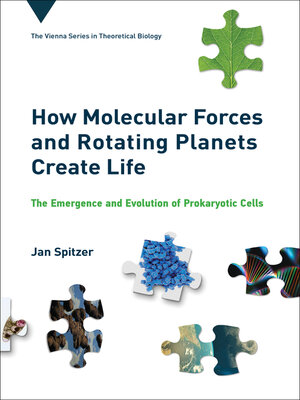How Molecular Forces and Rotating Planets Create Life
ebook ∣ The Emergence and Evolution of Prokaryotic Cells · Vienna Series in Theoretical Biology
By Jan Spitzer

Sign up to save your library
With an OverDrive account, you can save your favorite libraries for at-a-glance information about availability. Find out more about OverDrive accounts.
Find this title in Libby, the library reading app by OverDrive.



Search for a digital library with this title
Title found at these libraries:
| Library Name | Distance |
|---|---|
| Loading... |
A reconceptualization of origins research that exploits a modern understanding of non-covalent molecular forces that stabilize living prokaryotic cells.
Scientific research into the origins of life remains exploratory and speculative. Science has no definitive answer to the biggest questions—"What is life?" and "How did life begin on earth?" In this book, Jan Spitzer reconceptualizes origins research by exploiting a modern understanding of non-covalent molecular forces and covalent bond formation—a physicochemical approach propounded originally by Linus Pauling and Max Delbrück. Spitzer develops the Pauling-Delbrück premise as a physicochemical jigsaw puzzle that identifies key stages in life's emergence, from the formation of first oceans, tidal sediments, and proto-biofilms to progenotes, proto-cells and the first cellular organisms.
Scientific research into the origins of life remains exploratory and speculative. Science has no definitive answer to the biggest questions—"What is life?" and "How did life begin on earth?" In this book, Jan Spitzer reconceptualizes origins research by exploiting a modern understanding of non-covalent molecular forces and covalent bond formation—a physicochemical approach propounded originally by Linus Pauling and Max Delbrück. Spitzer develops the Pauling-Delbrück premise as a physicochemical jigsaw puzzle that identifies key stages in life's emergence, from the formation of first oceans, tidal sediments, and proto-biofilms to progenotes, proto-cells and the first cellular organisms.







